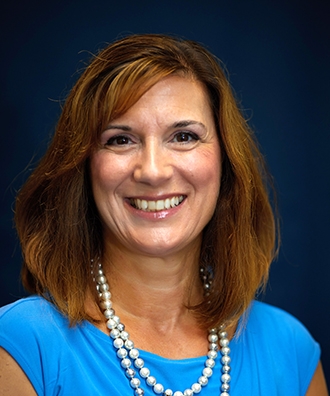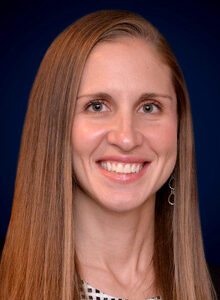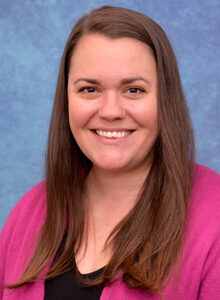Social Stigma, according to Wikipedia, is the disapproval of, or is discrimination against, an individual or identifiable group of people based on perceived characteristics that serve to distinguish them from other members of a society. Stigma can negatively affect the emotional, mental, and physical health of affected individuals often resulting in isolation or feelings of depression, anxiety, and shame. At times, we see that social stigma often leads to discriminatory acts by others. Such discrimination can be intentional or an unconscious bias. Regardless of the motivation, individuals may have experiences of rejection by other groups, verbal abuse, and physical abuse or denied access to basic needs such as education, healthcare, and employment.
In 1972, Dr. Wolf Wolfensberger wrote the seminal article, “The Principle of Normalization in Human Services.” This article highlighted the primary philosophy that all people with disabilities should be supported in leading their lives like others in their community and of their similar age. It emphasized that people with disabilities should be offered the same opportunities and environmental conditions to have a normal course of life. Dr. Wolfensberger offered a few guiding principles that included:
- Supporting the development of personal behaviors and characteristics that are culturally normative (note that this can change over time, and has been altered by an explicit value on individual difference and disability identity)
- Supporting individuals to look and behave in ways that are considered culturally appropriate and similar to that culture relative to age and sex (this can also change over time and should be flexible based on personal preferences, and has also been altered by explicit values on individual differences and identities)
- Supporting individuals to interact with others at an individual level, family level, peer group, school and education systems, neighborhoods, vocational /work settings, and navigating social justice systems.
Since the writing of this 1972 article, several advances have been made in providing individuals with disabilities with equal opportunities. Laws have been passed prohibiting discrimination in schools and employment sectors (Rehabilitation Act of 1973; ADA of 1990, 2008). For example, special education laws, teacher training, and training and specialization in healthcare fields to promote comprehensive care has been emphasized in residency programs. In addition, disabilities awareness and specialty training for law enforcement personnel have been implemented nationwide. These advances are significant, and they should be noted given the impact they have had thus far in attempting to equalize the opportunities for all individuals with disabilities. While we have certainly come a long way in reducing stigma, perseverance is still needed in finding ways to support people with disabilities. A major element of this movement involves having the community at large widen their definition of acceptable. Social acceptance of difference is key to improved outcomes.
Since some cultural norms change over time, we need to continually ask how we are helping overcome stigma. At the individual level, do we see the person we are supporting as able to dream and design a life by which they feel fulfilled? Or do we feel we “know better” and design a lifestyle for them with little regard to their desires? As a support system, we need to make sure we have educated ourselves about disabilities to be better positioned to support people with disabilities. Being supportive means treating people with dignity and respect and working together to figure out what they find meaningful. Establishing a better understanding of their personality and personal attributes can help us support their goals. In addition, helping family members in the process of supporting their loved one’s needs and desires allows that person to continue to thrive in loving environments and communities they live in. (CDC)
Helping people with disabilities overcome stigma and discrimination includes educating other members of the community who can also help support their needs in a natural way (Unicef). A person’s community includes neighbors, schools, first responders, physicians, businesses, prospective employers, and any other location in the community that is important to that person (Parenti, 2017). We need to help support people with disabilities to be fully integrated community members by ensuring they receive the appropriate access to education, healthcare, goods and services, and have the opportunity to have access to competitive employment, which can involve specific skills training. Disability advocates continually point out the ways in which marginalization continues to occur; we need to include those voices in all elements of planning and service provision.
In addition to continuing to educate others on the abilities of people with disabilities, it is crucial to be careful with our words given that the language we use can significantly impact stigma reduction. Our words and conversations need to be supportive and positive in order to impact stereotypes that may still exist within the community. Remaining positive and highlighting the contributions of a person with a disability helps support them and assists other community or family members to value the person’s contributions. Ensuring that we see and name the “person” instead of referring to them as clients or patients helps others see the person too.
Case Study
The following Case Study illustrates an example of how one person was supported in ways that overcame stigma in their community.
William is a 38-year-old male diagnosed with an intellectual disability who resides in a home in the community. William receives 24-hour support from direct support professionals (DSPs) who work in his home as well as the program he attends during the day. William also receives behavior services to help support him in learning how to communicate his needs instead of engaging in behaviors that may be considered dangerous or disruptive, such as aggressive behaviors towards others, destruction of property, or yelling at others. William has great communication skills and is able to engage in conversations with others. He loves to help and will jump right in when he sees someone start to take the trash out or wipe down a table. He has strong gross motor skills and enjoys participating in a variety of vocational activities. William expressed a desire to be competitively employed, and the aforementioned skills helped his support team to work with him identifying possible jobs of interest. Competitive employment involves working in the community while earning a competitive wage (i.e., earning what someone else working the same job without a disability makes, at minimum wage or higher), with the ultimate goal being to have natural community supports. Natural supports in an employment setting include co-workers, managers, and any other person who will be naturally in the environment, as opposed to a paid caregiver.
In order to help make William’s community involvement a success, preparation occurred for him, the community, and the DSPs providing support. To prepare William for success, his preferences were evaluated and community jobs/locations meeting those preferences were identified. William has full autonomy when he accesses the community and what activities are completed. To prepare the natural supports at the job location, the DSP demonstrates for coworkers and community members that all interactions should be with William, and not with the DSP. They also demonstrate and teach how to build a relationship and how to respond if William starts to become agitated. They also demonstrate the best way to teach William any new skills.
Initially, William attended work once a week for 30 minutes and would complete a highly preferred job duty (taking out the trash). The length of time William attended, and the number of days were slowly increased, with his preferences and choices closely monitored. This gradual increase allows the co-workers to get to know William and build relationships. Once those relationships were built, the DSP was able to step back, and natural supports took over. William’s DSP plays close attention to his verbal and physical cues, and if William becomes agitated or overwhelmed, he is reminded of his ability to take a break, or even to leave work early. Because the relationship has developed over time with careful attention to relationship building, the place of employment understands the need for flexibility and William is permitted to leave early, come in late, switch days, and so forth, based on his needs. William has also developed relationships with community members who frequent the convenience store and will notice if he’s been out for a few days. They too help to provide the natural supports needed to secure successful community involvement.
By educating the natural supports in William’s community about his needs and how best to support him, stigma around any perceived differences has been minimized and replaced with genuine care and concern for him as a person.
Though much progress has been made both legally and culturally related to discriminatory practices, there is still work to be done to create inclusive environments in all sectors of life. Modeling how to be inclusive in our everyday lives is crucial.
We must also continue to listen to the disability community about their needs and the best way to support a person with a disability in achieving the goals they set for themselves. While there are general guidelines for providing this support, specifics are determined by the person receiving supports, and this will look different for each person. What’s most important is ensuring that the person receiving supports is actively involved in all aspects of planning to the greatest degree possible. Additionally, we must listen and heed the words of advocates who are also disabled, learn from their feedback, and involve them in our work.
Helena Maguire, MS, LABA, BCBA, CDE®, is Executive Director of Melmark New England. Maggie Haag, MEd, BCBA, LSW, CDE®, is Executive Director and Ashley Benedetto, MS Ed, BCBA, is Director of Adult Day Programs at Melmark Pennsylvania.
References
CDC, Disability and Health Inclusion Strategies, September 15, 2020 (webpage)
Parenti, K. (2017). Clinical Corner: First responder education in autism. Science in Autism Treatment, 19(7).
Patient Protection and Affordable Care Act of 2010
Section 504 of the Rehabilitation Act of 1973
The American Disabilities Act of 1990, ADA Amendment Act of 2008
Unicef, Reducing Stigma and discrimination against children with disabilities, https://www.unicef.org/media/120421/file/Social_and_Behavioural_Change_Interventions_to_Strengthen_Disability_Inclusive_Programming_Summary.pdf
Wikipedia, Social Stigma definition
Wolfensberger, Wolf P.; Nirje, Bengt; Olshansky, Simon; Perske, Robert; and Roos, Philip, “The Principle of Normalization In Human Services” (1972). Books: Wolfensberger Collection. 1. https://digitalcommons.unmc.edu/wolf_books/1









